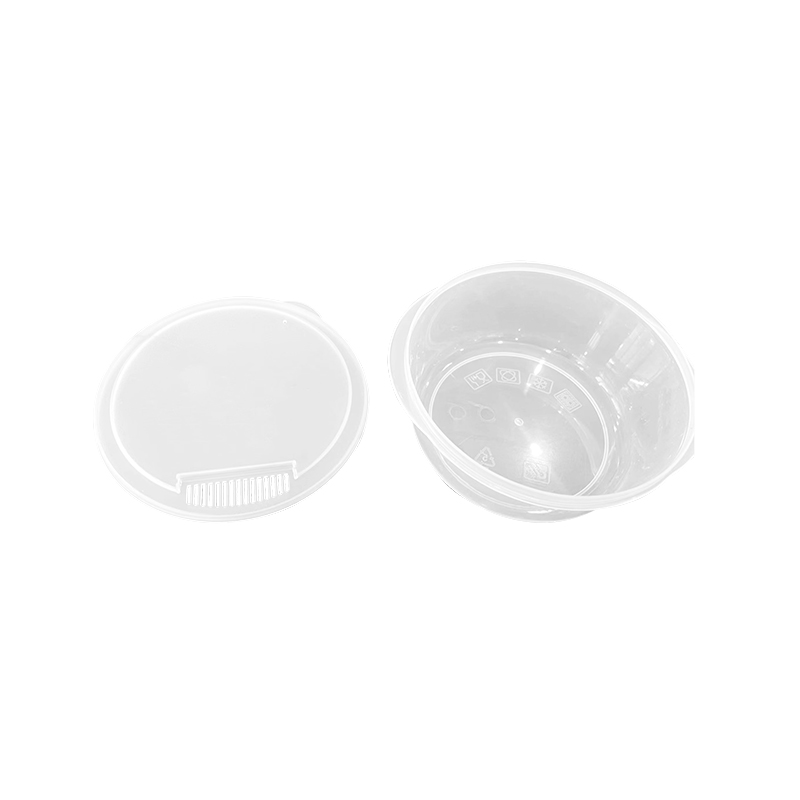The Plastic Thin Space Cup Mould represents an innovation in the manufacturing o...
-

+86-15068654601
-

No.62 Zhao Feng Road, Huangyan, Taizhou, Zhejiang, China

+86-15068654601

No.62 Zhao Feng Road, Huangyan, Taizhou, Zhejiang, China
In-mold labeling (IML) technology has become widely used in the production of food containers. Combining the molding and labeling processes, IML allows manufacturers to create food containers with integrated labels, improving efficiency and reducing post-production labeling steps. Anti-theft designs in IML food containers are increasingly applied in retail and food service to reduce tampering and product loss. However, despite its advantages, IML anti-theft food container moulds manufacturer can present several problems during production and usage. Understanding these potential issues is essential for manufacturers, quality control teams, and end-users to ensure smooth operations.

1. Mold Design and Structure Problems
(1) Poor alignment of labeling and molding surfaces
IML moulds require precise alignment between the mold cavity and the label placement system. Misalignment can result in labels being off-center, wrinkled, or partially missing, which affects both appearance and anti-theft functionality. For example, a factory producing small yogurt containers observed labels misaligned by 2–3 millimeters, causing a noticeable discrepancy on the packaging line. Addressing this issue requires careful calibration of the mold, regular inspection of the label insertion mechanism, and maintenance of guide pins to maintain consistent alignment.
(2) Complicated anti-theft mechanisms
Incorporating anti-theft features such as tamper-evident seals or locking tabs increases mold complexity. Poorly designed molds can cause incomplete formation of locking features or misfiring during ejection. For instance, a manufacturer of meal prep containers noted that some lids failed to lock securely, reducing the anti-theft function. Optimizing mold design and using simulations during the planning stage can help identify weak points and ensure proper formation of anti-theft components.
(3) Wear and damage of mold components
IML anti-theft molds include moving parts like slides and lifters to form complex container shapes. Frequent production cycles can cause wear or damage, affecting dimensional accuracy. Real-life cases in high-volume snack packaging plants show that worn mold slides can create flash or incomplete anti-theft features. Scheduled maintenance, use of hardened steel, and monitoring of mold life cycles are necessary to mitigate this problem.
2. Production Process Complications
(1) High cycle time due to complex anti-theft features
Adding anti-theft components to containers often increases molding complexity, resulting in longer cycle times. This can affect production efficiency in facilities producing thousands of units per hour. For example, a factory producing sealed salad containers noted a 10–15% increase in cycle time when integrating tamper-evident lids. Adjusting injection parameters and optimizing cooling channels can help balance production speed with product quality.
(2) Label contamination or wrinkling
IML labels are sensitive to moisture, dust, and temperature fluctuations. Contaminated labels may stick improperly to the mold surface or wrinkle during injection, causing defective products. In practice, food packaging plants often install air filtration systems and monitor humidity to prevent contamination and ensure consistent label application.
(3) Ejection issues
Anti-theft features, such as small tabs or grooves, can complicate the ejection process, resulting in container deformation or damage. Real-life examples include containers with broken locking tabs during automated ejection in snack packaging lines. Proper ejection pin placement, mold venting, and timing adjustments are essential to reduce these failures.
3. Material-Related Challenges
(1) Incompatible plastic or label materials
Mismatch between container material and label type can cause adhesion problems, warping, or cracking. For instance, using polypropylene with a PVC label may result in poor bonding under certain injection temperatures. Choosing compatible plastics and labels and testing under operational conditions are critical steps to prevent these issues.
(2) Shrinkage and deformation
Anti-theft containers with multiple features can experience uneven shrinkage during cooling, affecting dimensional stability. This may lids not fitting correctly or locking mechanisms failing. Manufacturers need to consider material shrinkage rates during mold design and adjust cooling channels or injection parameters accordingly.
4. Functional or Consumer-Related Issues
(1) Difficulties in opening
Highly secure anti-theft features can make containers difficult for consumers to open, dissatisfaction or product damage. For example, some customers reported tearing labels or breaking lid tabs when attempting to open sealed snack containers. Balancing security with usability through ergonomic design can mitigate this problem.
(2) Misinterpretation of anti-theft indicators
In some cases, tamper-evident features may be unclear, causing confusion for users or store personnel. Clear design instructions, standardized indicators, and consumer education help ensure anti-theft features function as intended.